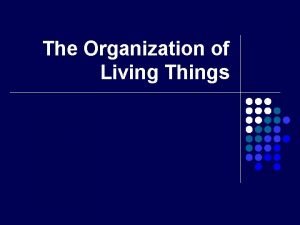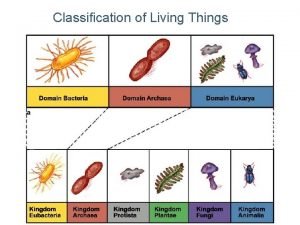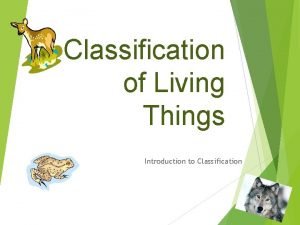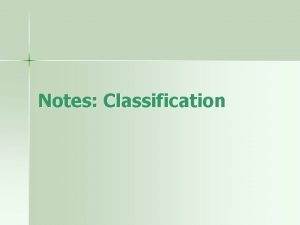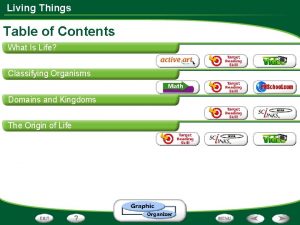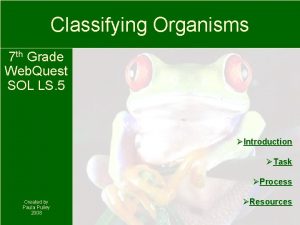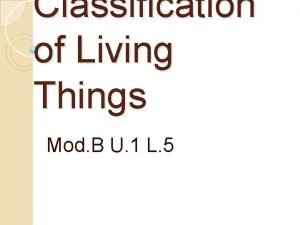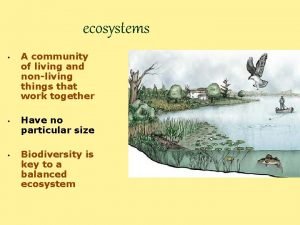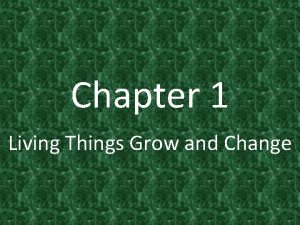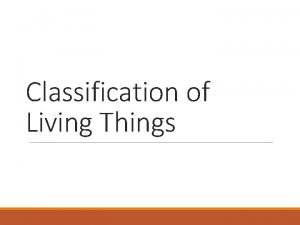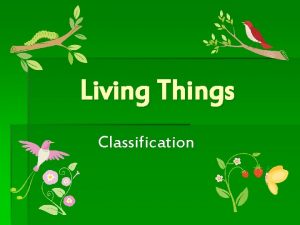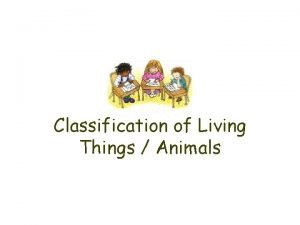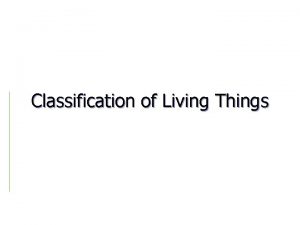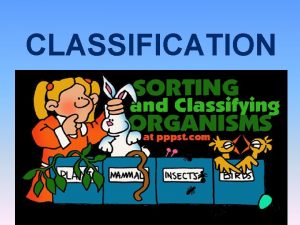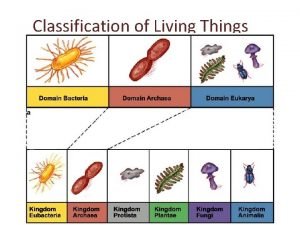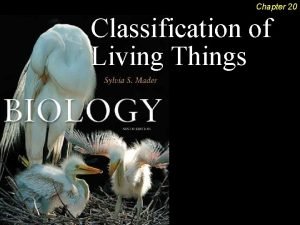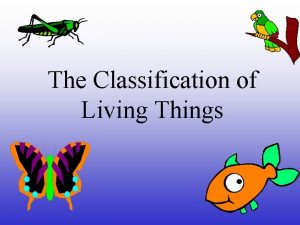Living Things Organization and Classification Living things What




















- Slides: 20

Living Things Organization and Classification

Living things What makes something alive?

Living things are organized Cell Hierarchy Unicellular (bacteria) Multicellular (You!)

Living things use same chemicals Water Carbohydrates (sugar for energy) Proteins and lipids (building materials) Nucleic Acid (Makes you one of a kind)

Living things use Energy Growth and repair Digestion Running, swimming, football, getting out of bed, and even thinking!

Living things respond Stimulus: change in surroundings that causes and organism to respond (Tiger running at you) Response: action, or change in behavior (RUN AWAY!)

Living things grow and develop Child to adult Cell tissue organ system organism

Living things reproduce The alternative is extinction! Spontaneous generation and Francisco Redi/Louis Pasteur

4 things all living organisms need Food Water Living space Homeostasis

What are the types of living things? Two types of organisms: prokaryotes and eukaryotes Prokaryote Organisms with no true nucleus Eukaryote Organisms with a true nucleus

Organization Unicellular One Cell Bacteria and Protists Multicellular Fungi, Plants, Animals

Unicellular Organisms Include bacteria and protists Single-celled All systems and DNA in one cell Simpler organisms No internal hierarchy Can be eukaryote (protist) or prokaryote (bacteria)

Multicellular Organisms Include Fungi, Plants, and Animals More than one cell More specialized (each cell has a specific function) More complex organisms Organized in a hierarchy ONLY Eukaryote

What’s for lunch? Autotrophs Organisms that make their own food *ALL plants are autotrophs Heterotrophs Organisms that cannot make their own food

Why Classify Organized and easy to find All living things classified into one system

Levels of Classification Domain (3) Kingdom (5) Phylum Class Order Family Genus Species

How do we decide where to put stuff? Same type of cell (prokaryote or eukaryote) Ability to make food (autotroph or heterotroph) Number of cells in organism (unicellular or multicellular)

Domains Three domains: • Prokarya (bacteria) • Archaea (archaea) • Eukarya (everything else)

Kingdoms 4 Kingdoms under Eukarya: • Protista (paramecium) • Fungi (mushrooms and molds) • Plantae (trees, grass, flowers) • Animalia (dogs, dolphins, panda bears, and you!)

How we classify Carolus Linneaus • “Father of Taxonomy” Binomial Nomenclature • Genus and Species *Two organisms must be in the same species to mate
 Whats an energy pyramid
Whats an energy pyramid Organization of living things
Organization of living things What is the smallest living unit in all organisms?
What is the smallest living unit in all organisms? What are the seven life processes of living things
What are the seven life processes of living things 8 levels of classification
8 levels of classification Genus and species difference
Genus and species difference Kingdom phylum class order
Kingdom phylum class order Living things meaning
Living things meaning Classification of living things notes
Classification of living things notes Living things table
Living things table Unscramble classify
Unscramble classify 8 level of classification
8 level of classification Compare and contrast organization
Compare and contrast organization Process organization in computer organization
Process organization in computer organization Ecosystems examples
Ecosystems examples Ecosystem things
Ecosystem things Do all plants have roots
Do all plants have roots Unicellular multicellular organisms
Unicellular multicellular organisms Things that grow and change
Things that grow and change Non living things in temperate forest
Non living things in temperate forest Things in ecosystem
Things in ecosystem

